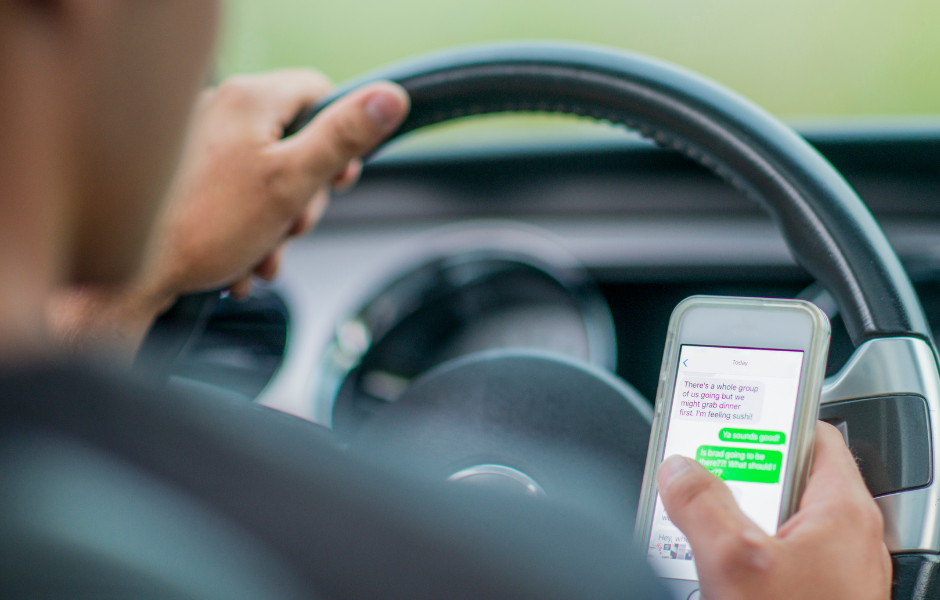April is Distracted Driving Awareness Month. In 2021, more than 3500 people died in accidents directly related to the drivers experiencing distractions. Most of the distractions are created by cell phone use via texting or talking on the phone. However, many other distractions occur. We’ve heard of movie watching, playing video games, putting on make-up or maybe it is a back seat passenger having a tough day. Regardless of the distraction, anyone operating a moving vehicle has an obligation to ensure that they are doing so in an effective and safe manner.
During the week of April 3-10, you might see a heightened law enforcement presence working on distracted driving awareness. The theme is U DRIVE. U TEXT. U Pay. Officers will focus on reminding drivers to put their cell phones down, eliminate other potential hazards, and how to improve safety during travel on the roadways.
Tips to Avoid Distractions
Distracted driving comes in four types: visual, auditory, manual, and cognitive. Eating, drinking, listening to loud music, pets, even kids can cause us to lose focus. Some basic recommendations for drivers include:
- First, and most obviously: Don’t talk or text while driving! According to traffic experts, texting is the most dangerous driving activity. According to the National Highway and Traffic Safety Administration (NHTSA) sending or reading a text message takes your eyes off the road for about 5 seconds, long enough to cover a football field while driving at 55 mph. According to the U.S. Department of Transportation (DOT), text messaging increases the risk of crashes or near-crashes by 23 times.
But texting is not the only culprit in distracted driving incidents. Talking on the phone, even on a hand-less device, can impair the driver the same way being intoxicated would. Cell phone users are 5.36 times more likely to get into an accident than undistracted drivers, the research shows. - Don’t multitask while driving. Drivers should only do one thing while on the road: Drive! So don’t do paperwork or put on your makeup when you are rushing to get to school or work.
- Don’t eat or drink while driving. Either eat before or after a trip, or pull over.
- Don’t get distracted by technology. A big selling point for newer cars is all the bells and whistles, many of which are marketed as safety-promoting devices (voice-activated systems or handless devices). But the more complicated these are, the more attention they take from the road.
- Make all adjustments before hitting the road. Drivers should set GPS, climate control, and sound systems, as well as adjust mirrors and seats, before setting out on the road.
- Avoid the clutter. A messy car, with items rolling and moving all over the place, can be a distraction.
- Keep your eyes on the road. Drivers should always keep their eyes on the road and avoid looking at things like cool-looking buildings or eye-catching billboards. It’s recommended that drivers move their eyes every two seconds and scan mirrors every five to eight seconds.
- Never Drive Drowsy. Drowsy driving is a factor in more than 100,000 crashes each year, according to NHTSA. Drowsy drivers should immediately pull off the road and find a safe place to rest.
Ask your friends to join you in pledging not to drive distracted. You could save a life. Share your pledge on social media to spread the word — #JustDrive. If you are concerned about distracted driving in your home or workplace, TSS can help you develop a contract for your teen or policies for your business. Contact us at info@tss-safety.com.
You can also learn more about Distracted Driving through the National Highway Traffic Safety Administration website.

